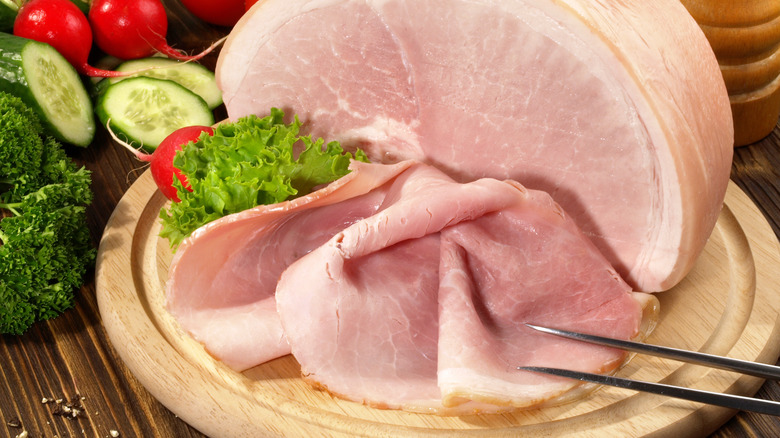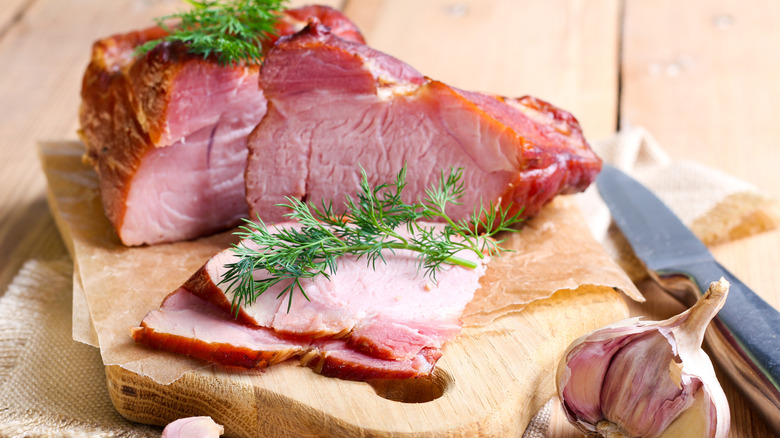What Sets Country Ham Apart From City Ham?
The American South has distinct culinary traditions, and ham is no exception. Country ham is king in states like North Carolina, Virginia, and Kentucky that make up the "ham belt," — and no, that's not another name for everyone's waistbands after the holidays. In this part of the country, folks prefer their tea sweet and their ham salty (very salty). Meanwhile, across the rest of the nation, the sweeter city ham tends to dominate holiday tables. The divide isn't just about geography; It's about history, preparation, and the way these two hams are served and enjoyed.
Country ham is the Southern heavyweight of cured meats. It's dry-cured with salt, often spiced, and sometimes smoked. This preservation method, developed before refrigeration, involves months of aging. The result is a salty, savory, and intensely flavorful ham with a firm, chewy texture. It's a labor of love, requiring soaking and cooking before it can be served (unless you're enjoying thin slices, charcuterie-style).
City ham, on the other hand, isn't typically aged. Wet-cured in a brine of salt, sugar, and spices, it's often pre-cooked, lightly smoked, and ready to eat straight from the package. One of the cold cuts you find on an Italian sub, for example, is city ham. Its flavor is sweeter and milder, with a juicier, more tender bite. These ham curing methods are so distinct that you can't make one style using the other technique. So if you're craving country ham, don't look to your local deli for a city ham substitute.
Finding, cooking, and eating country and city hams
Both country ham and city ham are readily available, but how you buy and eat them couldn't be more different. Country ham is most often sold whole, uncooked, and heavily salted, making it ideal for Southern-style cooking. Brands like Smithfield or Edwards specialize in this Southern staple, and you'll find it at specialty stores or online. Pre-sliced country ham, which is thinner and easier to serve, is often ready to eat without cooking.
City ham, however, is the go-to ham in grocery stores nationwide. Think of the honey-glazed holiday hams that dominate Christmas and Easter dinners. Pre-sliced deli meats, spiral hams, and tinned ham are other variations of city ham that you can easily find at a grocery store.
Culinary traditions around these hams are just as different. Country ham is often paired with biscuits for breakfast, fried and served with red-eye gravy, or eaten paper-thin as part of a charcuterie board. Its bold flavor and saltiness make it a centerpiece of Southern meals. City ham, by contrast, is often served as a holiday main dish, glazed with honey or brown sugar, and baked until caramelized. Its sweetness and tenderness make it popular for festive gatherings and a deli staple for sandwiches. Whether you're in the "ham belt" savoring the briny depth of country ham or enjoying the convenience of a honey-glazed city ham (or enjoying them both in a ham salad recipe that requires two types of ham), these two traditions celebrate pork in their own delicious ways.

